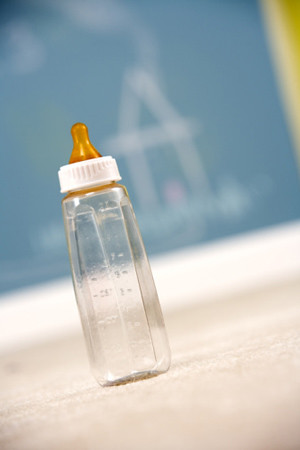
Conventional logic suggests that if there were an easy, all-natural way to reduce health care expenses, such a restoration method should right away be utilized. However, as outlined by the Centers for Disease Control and Prevention (CDC), when three-quarters of infants born within the United States take their first meals via nursing, the rate plummets after 6 months, which runs contrary to CDC Healthy People standards. Medical experts believe that this breastfeeding reduction increases pediatric costs dramatically, as children who do not breastfeed have been proven to be more susceptible in general to a variety of diseases that have contributed to increased rates of infant mortality.
Nutritious People are a product of nursing
”Meeting the national breastfeeding initiation goal is a good accomplishment in women’s and children’s overall health, however we have more work ahead,” said Dr. William Dietz of the CDC to Medpage Today. That work is made clear by CDC study findings: 57 percent of U.S. babies are no longer nursing at six months, and 78 percent are done by one year.
Nursing in troubled waters
State-to-state nursing rates were tracked by a 2007 CDC Nutritious People study. To give an idea of the degree of variance, 90 percent of infants in Utah were found to breastfed regularly, when only 53 percent liked such bonding time with mom in Mississippi. State support for breastfeeding policies are a substantial part of the study. A total of 21 states had no breastfeeding-friendly amenities for mothers and kids, and numerous others had hospitals that scored low in maternity care and nursing instruction. According to the National Conference of State Legislatures, there has been improvement on the legislative level since the 2007 CDC study, but there remain states that do not have specific laws guarding the right to breastfeed outside the home in an area other than a cramped restroom. Speaking of disdain, so long as a popular site like Facebook takes a stance against breastfeeding photos on decency grounds, The United States is in puritanical trouble. Infant formula mak! ers certainly do not object, although people who care might protest as they are with the international Nestlé boycott.
No nursing is a costly choice
According to Dr. Melissa Bartick of Harvard Medical School and Arnold Reinhold of the Alliance for the Prudent Use of Antibiotics, the growing absence of colostrum-rich breast milk in children’s diets has caused pediatric costs to skyrocket. Their report in the journal Pediatrics states that “$3.6 billion could possibly be saved if breastfeeding rates were increased to levels of the Healthy People objectives”. That was depending on 2001 details. The authors update the study, with startling results. For kids six months and younger who are fed exclusively via nursing, Bartick and Reinhold found that if there was at least 90 percent compliance (the Healthy Individuals recommended minimum), the United States of America could now save “$13 billion per year and prevent an excess of 911 deaths, nearly all of which would be in infants”.
What about infant formula? While inferior to breast milk in terms of disease prevention and growth promotion, it is also costly. There might be medical reasons why a mother cannot breastfeed, in which case formula is OK, even if it is too costly for Americans who need money. Needing pay day loans for infant formula powder isn’t a good place to be, financially.
Further reading
Pediatrics
pediatrics.aappublications.org/cgi/content/abstract/peds.2009-1616v1
CDC Breast Feeding Report Card
cdc.gov/breastfeeding/pdf/BreastfeedingReportCard2010.pdf
Medpage Today
medpagetoday.com/Pediatrics/GeneralPediatrics/22162
National Conference of State Legislatures
ncsl.org/default.aspx?tabid=14389
Wikipedia
en.wikipedia.org/wiki/Breast_milk
No comments:
Post a Comment